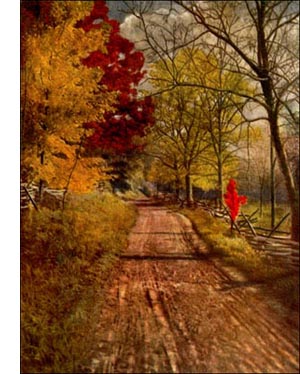California Buckeye Tree
 The California Buckeye (Aesculus Californica, Nutt.) is a close, wide-topped tree, 30 to 40 feet high, with leaves much like the horse chestnut's, large, compact clusters of white or rose-coloured flowers, and smooth pear-shaped fruits.
The California Buckeye (Aesculus Californica, Nutt.) is a close, wide-topped tree, 30 to 40 feet high, with leaves much like the horse chestnut's, large, compact clusters of white or rose-coloured flowers, and smooth pear-shaped fruits. Its winter buds are pointed and resinous. The upper Sacramento Valley is its northern limit. It is found along the coast and on the western slopes of the Sierras as far as Los Angeles County. It is occasionally seen in European gardens.
A red-flowered buckeye (Aesculus austrina, Sarg.) has but recently been assigned a place among the species of this genus. It is a small tree, often scarcely more than a shrub. Its thin bark is pale, the leaves have five leaflets, but the distinctive character is the bright red flower cluster, with stamens protruding from the tubular corollas. Later, the pitted husk of the fruit, and the two thin-shelled nuts within it are good characters.
The tree occurs from Missouri to Texas and from near Memphis, Tennessee, to northern Alabama.
Aescula carnea is a garden species produced by crossing our shrubby red buckeye, A. Pavia, with the horse chestnut, A. Hippocastanum. The handsome hybrid tree is 20 to 30 feet high, with leaves like the horse chestnut and flowers flesh coloured to scarlet.
The colour is derived from the smaller species, but size, foliage, waxy winter buds, and slightly prickly fruit, as well as its hardiness, come from the larger one. This is one of the most desirable kinds for ornamental planting.